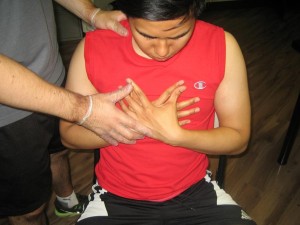Nasal flaring occurs if the nostrils widen during breathing. It might be an indication that the individual has difficulty breathing. This is typically seen among infants and children. In some cases, it might be a sign of respiratory distress.
What are the causes?
It is important to note that nasal flaring can be brought about by a variety of ailments that range from momentary ailments to long-standing conditions and accidents.
It can also be a response to rigorous exercise. Always bear in mind that an individual who is breathing in a comfortable manner should not have flaring of the nostrils.
Some of the usual causes include:
- Viral and bacterial infections
The doctor will listen to the breathing and lungs to check if there is any associated wheezing or the breathing is unusually noisy. - Asthma
- Airway obstruction
- Epiglottitis
When to seek emergency care
If the child or infant experiences continuous nasal flaring, seek prompt medical care. It is also vital to seek medical attention if there is a bluish-tinge in the skin, lips or nail beds. This is an indication that oxygen is not adequately pumped all over the body.
Management of nasal flaring
Nasal flaring is typically a sign of a health issue and not directly treated. Once a doctor is consulted, he/she will ask questions about the difficulty breathing.
The doctor will listen to the breathing and lungs to check if there is any associated wheezing or the breathing is unusually noisy.
If the breathing issues are severe, supplemental oxygen is given. In case the individual is diagnosed with asthma, the initial treatment is dependent on the severity of the attack.
What is the potential outcome?
Nasal flaring is a sign of difficulty breathing or an effort to lessen the resistance of the airway by dilating the nasal opening.
Normally, these problems tend to worsen until the root is identified and managed. It might be serious particularly among children and might necessitate emergency treatment. If the nasal flaring is managed using inhalers or medications, it does not usually have lasting consequences.

